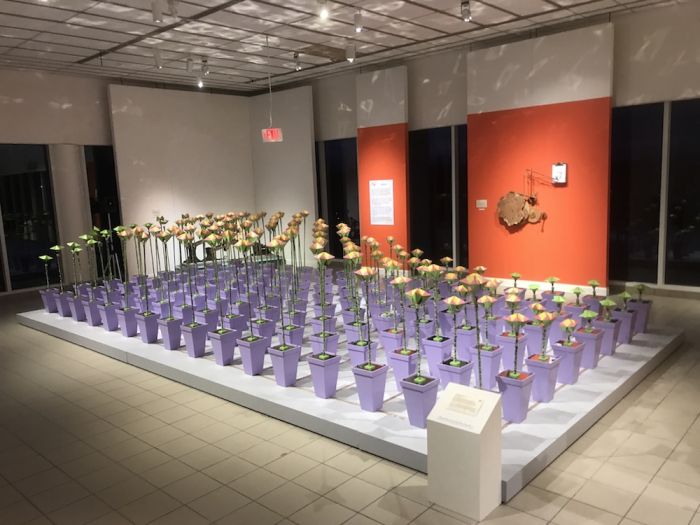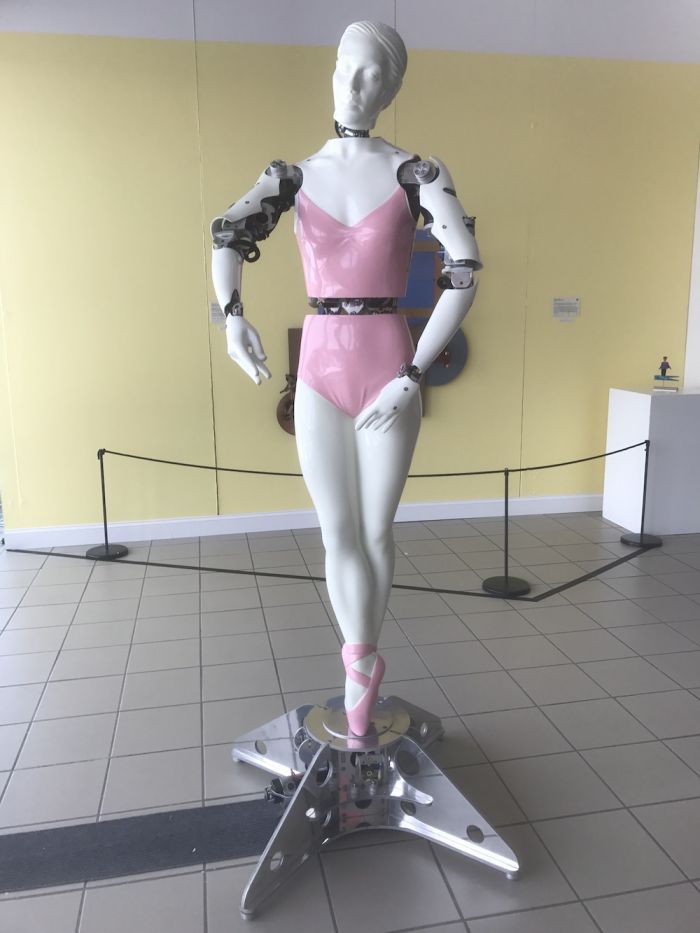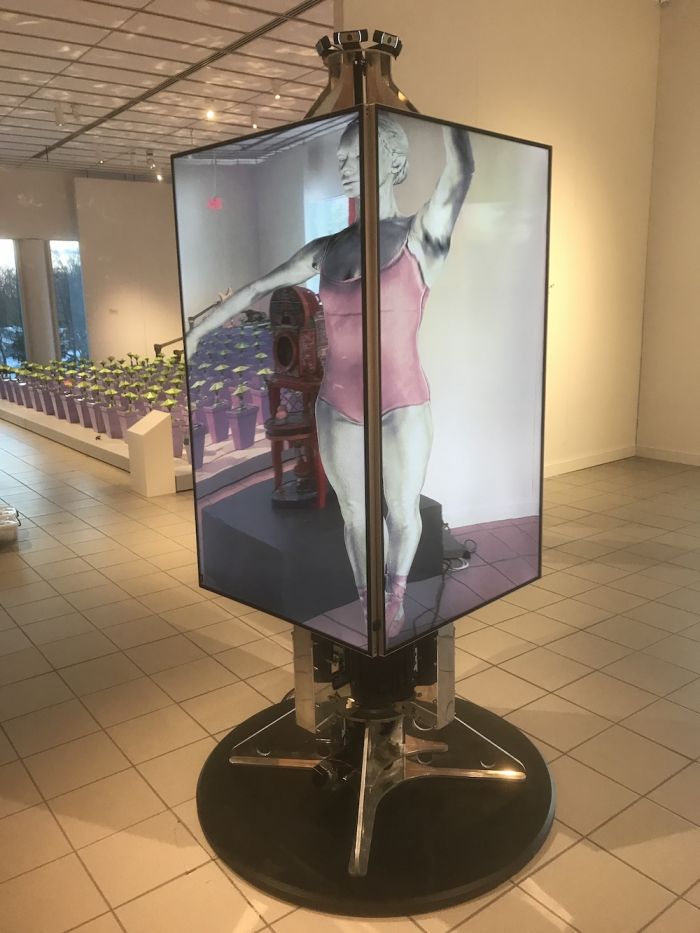Artist Geoffrey Drake-Brockman’s expertise and vast creativity belong to two niches that, when brought together, seem to manifest unlimited possibility. He combines the forces of computer programming and fine art, commenting on both the human condition and, more directly, viewer response, by exhibiting pieces that create an environment and experience in and of themselves. Although he once saw the fields of computation and art as completely divergent, he has since begun to recognize their ability to complement one another.
His first major piece was created in 2001, combining an artistic vision with computational realization, and was entitled Chromeskin(collab. R Kuhaupt). This piece – which was shown at the National Gallery of Australia – consisted of a chrome-plated sculpture of a human form, accompanied closely by an animated digital rendering of the same form. The relationship and tension created between these physical and cyber territories have informed much of Drake-Brockman’s work going forward, and can even be seen as an important stepping stone in the history of digital artwork.
While experimenting with several other light-, laser-, cyber-, and sculpture-based works, Drake-Brockman developed new artistic processes that paralleled the rapidly advancing technology available to him. Soon came Floribots, which debuted at the National Gallery of Australia in 2005. As he puts it, “Floribotsuses technology in a non-fetishistic way. It is colorful and emotionally active, though its computational capability is core to its expressive action.” This representation and utilization of technology was important to Drake-Brockman – he wasn’t interested in simply pushing technologies to their limits as a spectacle of human achievement, but rather using them in a sophisticated manner to demonstrate the humanistic relationships they have come to facilitate. The interactive installation showcases 128 robotic flowers working both individually and collectively, reacting to audience behavior and physical input, to explore the realities of societal living – blooming, wilting, and reblooming to simulate life’s endless narrative. It is just one example of Drake-Brockman’s interest in pushing boundaries as a multidisciplinary artist, exploring in detail everything from the materials he chooses to his selection of installation locations, which often go beyond the gallery and into the public domain.

As a longtime cybernetics artist, Drake-Brockman is strongly influenced by the theoretical basis of the art form, dating all the way back to its origins in the 1940s with mathematician Norbert Wiener, largely considered the pioneer of cybernetics. “He foresaw many of the modern applications of cybernetic technologies, even a possible end of human labor with the introduction of machine workers,” says Drake-Brockman. He goes on to explain how the progression of cybernetics came about in this modern age of technology:
“The explosion in the availability of cybernetic systems in our daily lives has come about through the ready availability of inexpensive digital devices. I'm interested in artistic interactions that are open-ended, and I need cybernetics for that. I avoid playback loops and the use of standard pallet-effects in my work, preferring to work with hand-coded software to define multiple levels of abstraction between an input stream and a set of outputs. These levels of abstraction act on one-another to create the results that the viewer experiences. The software - with the multiple feedbacks acting in parallel - along with the connected sensors and output devices, are the first level of cybernetics in my work. The second level of cybernetics I'm interested in spans the broader system, including human participants, who add more layers of abstraction and parallelism to the overall construct.”
In addition to cybernetics, Drake-Brockman also draws from “robot mythologies,” such as Pinocchioand Coppelia. His work capitalizes on the human/robot interactions—romantic or otherwise—that have been utilized throughout history, including Frankenstein, Pygmalion and the even the film Her.
Drake-Brockman’s thoughts on the future of technology-infused artwork are different from what you might expect. As he explains, technology has long been a medium of all forms of art:
“All art is technology. Even what we think of as traditional media – like bronze sculpture, printmaking, or film-based photography – use technologies that, at their time of introduction, were radical and civilization-changing. Artists will always use and adapt technologies of the day. However, when an artist deploys a technology, they invert the regular idea of it having a ‘use’ or ‘function’ at the service of the prevailing social order, and instead, it becomes an agent that can actually act on the social order.”
At present, Drake-Brockman has three major pieces on exhibition at the Morris Museum in New Jersey. Each individual piece took years to create, collectively showcasing an ongoing cycle that began nearly twenty years ago. This exhibition is the single largest gathering of the artist’s major works in one show at one time. In addition to Floribots, there are two new figurative works in the show, both modeled on a real ballerina named Jayne Smeulders. One of these pieces is a full-sized, sculptural dancing robot titled Coppelia One; the other is an augmented reality installation titled Parallax Dancer.


Both interpretations of Smeulders, physical and virtual, are able to interact with their audience in unique ways. Drake-Brockman explains that Coppelia One is the first of a planned sequence of four identical Coppelia robots. This initial figure acts almost like a life-sized music-box ballerina, spinning around en pointe and responding according to the angle upon which audiences view her. This is made possible thanks to four motion detectors, allowing the robot to rotate towards her viewer and perform a dance. Parallax Dancer, on the other hand, utilizes six machine vision cameras, allowing a “parallax-corrected, life-size, 3D dancing animation” to be displayed on the cuboid of screens that make up the installation. The artist muses, “In a way they are twins. They are installed next to each other in the gallery, and the audience can move between them, comparing two very different technological approaches to essentially the same representational theme.”
For Drake-Brockman, this exhibition marks a milestone and has created a space for him to begin new long-term projects including some interactive public art commissions that are currently in the works. He recently presented a keynote artist talk during this year’s AutomataCon, and will have a booth at the upcoming AIA Conference on Architecture taking place June 21-23 in New York City.
Eventually, Drake-Brockman plans to return to more human themes, including the one that started it all: Eve and the Apple. Until then, you can keep up with Drake-Brockman at http://www.drake-brockman.com.au/.









